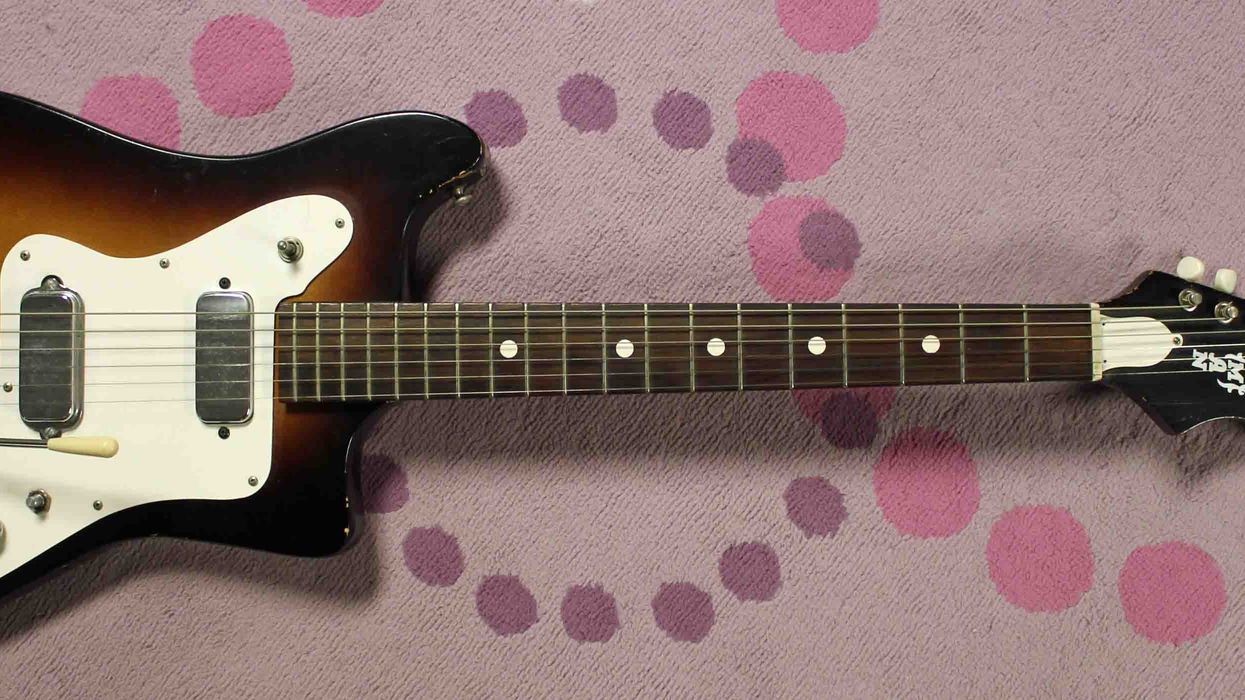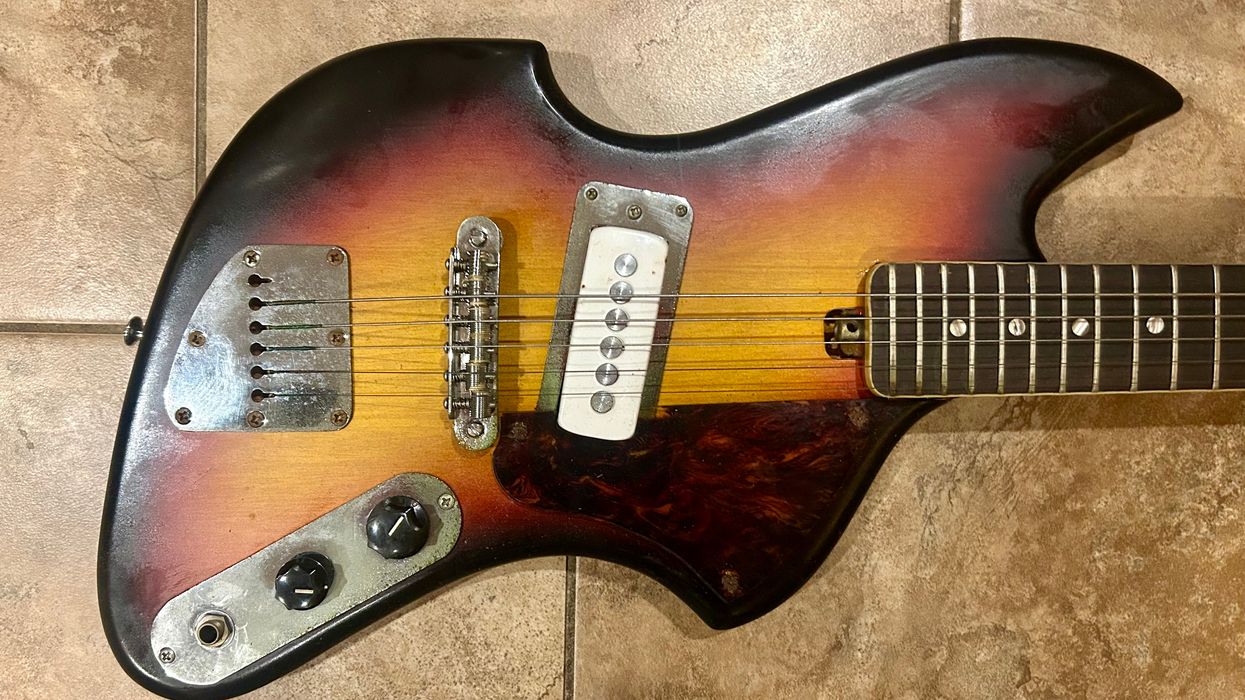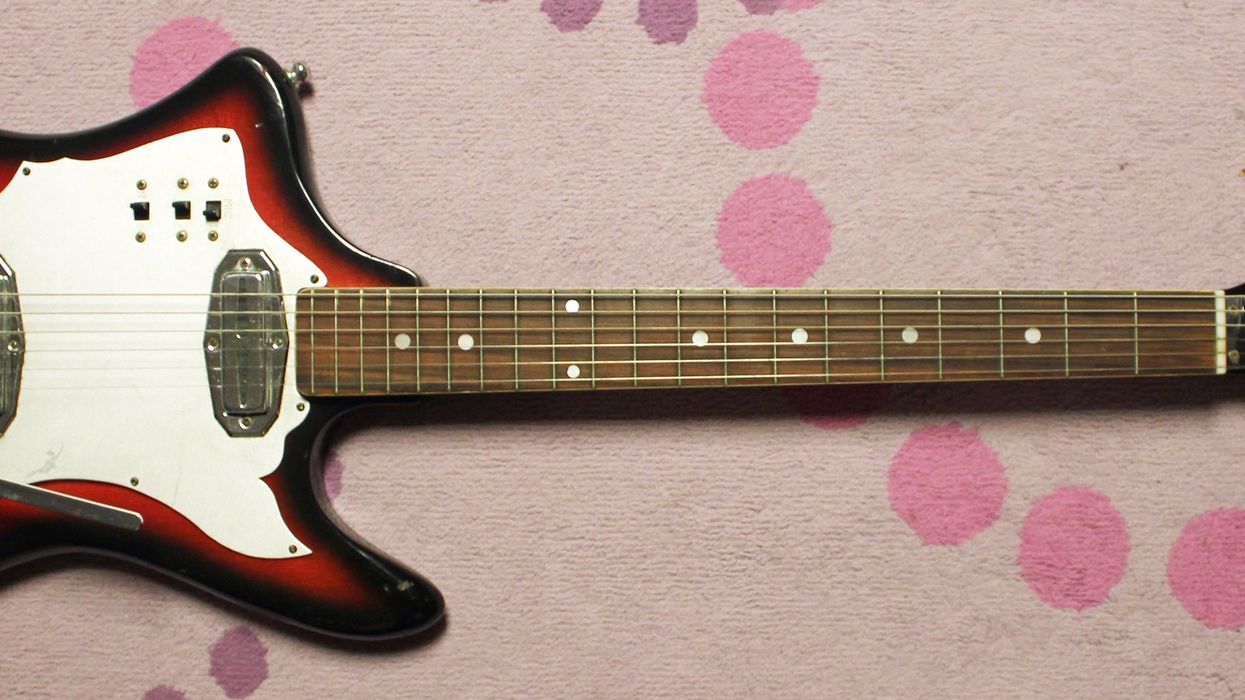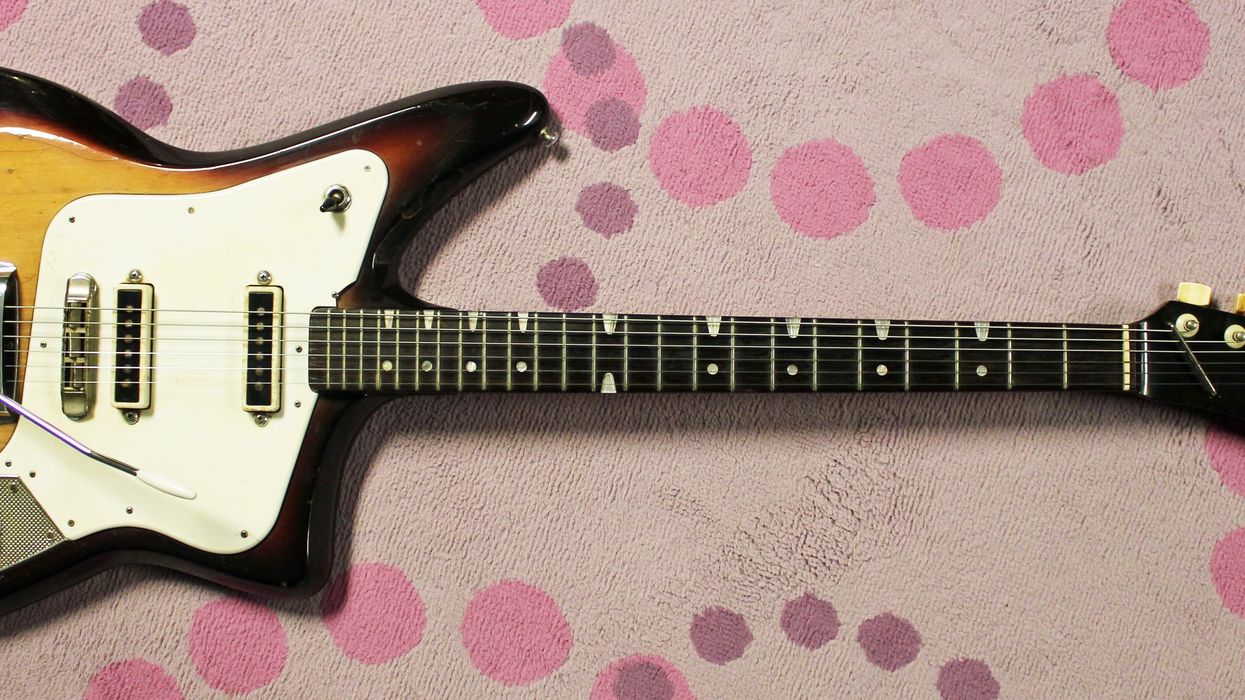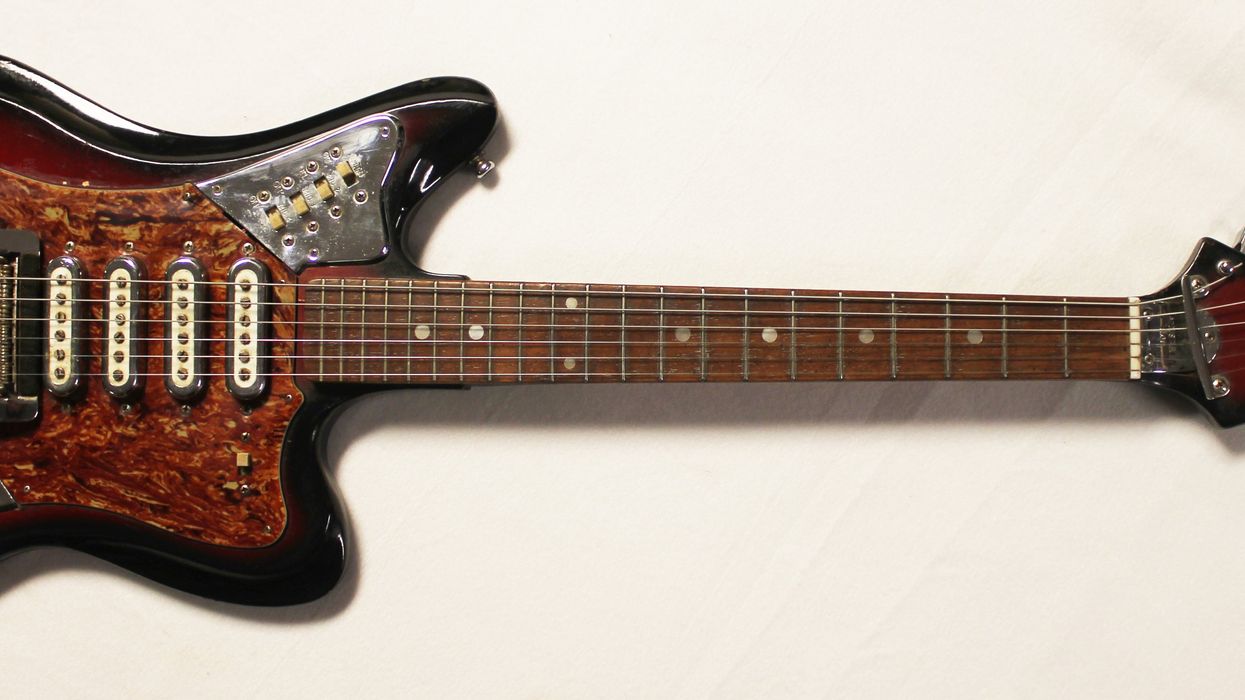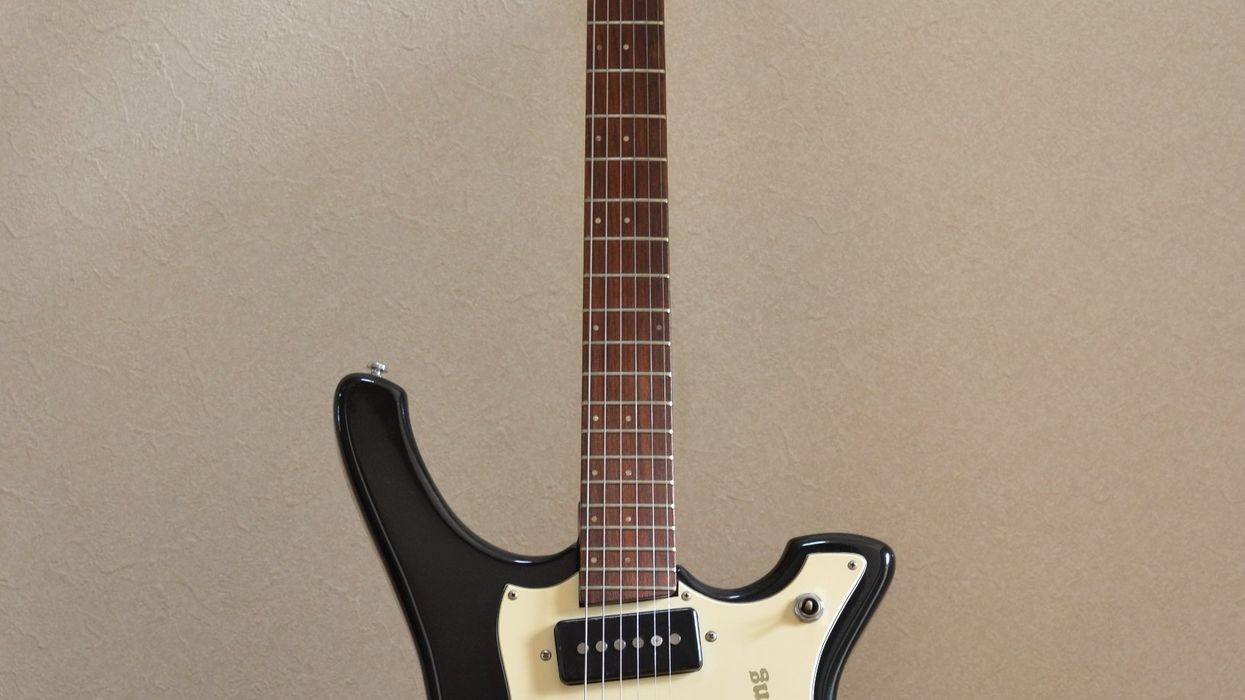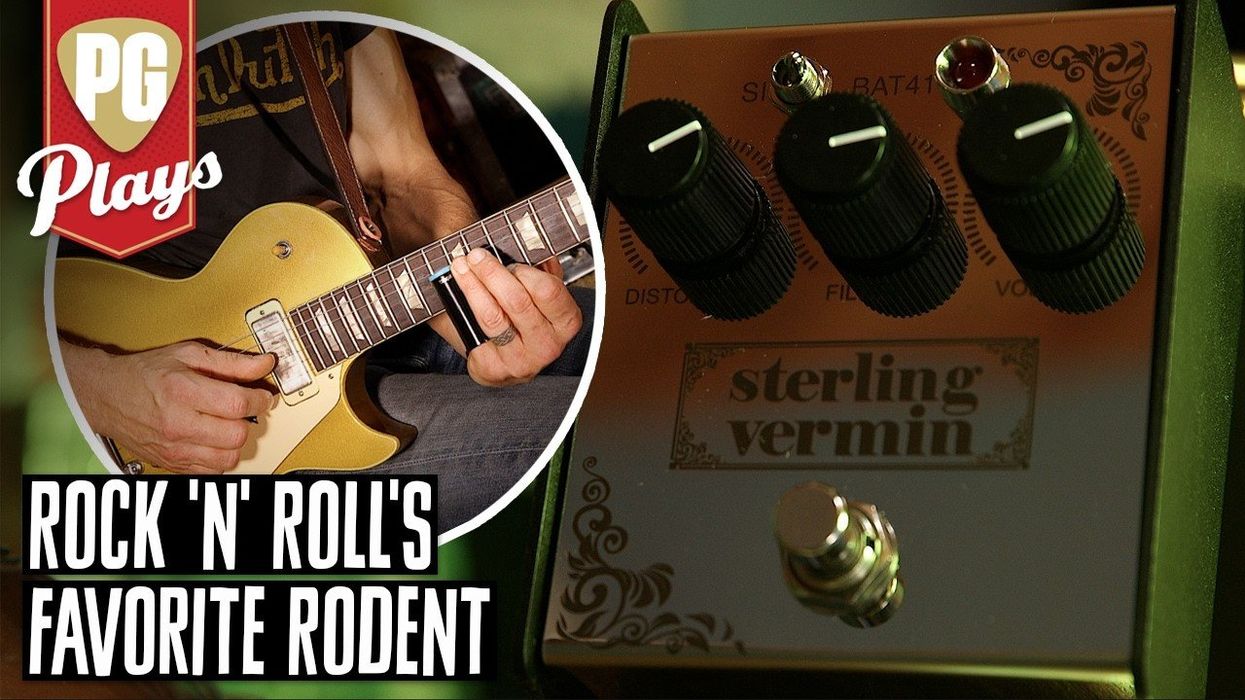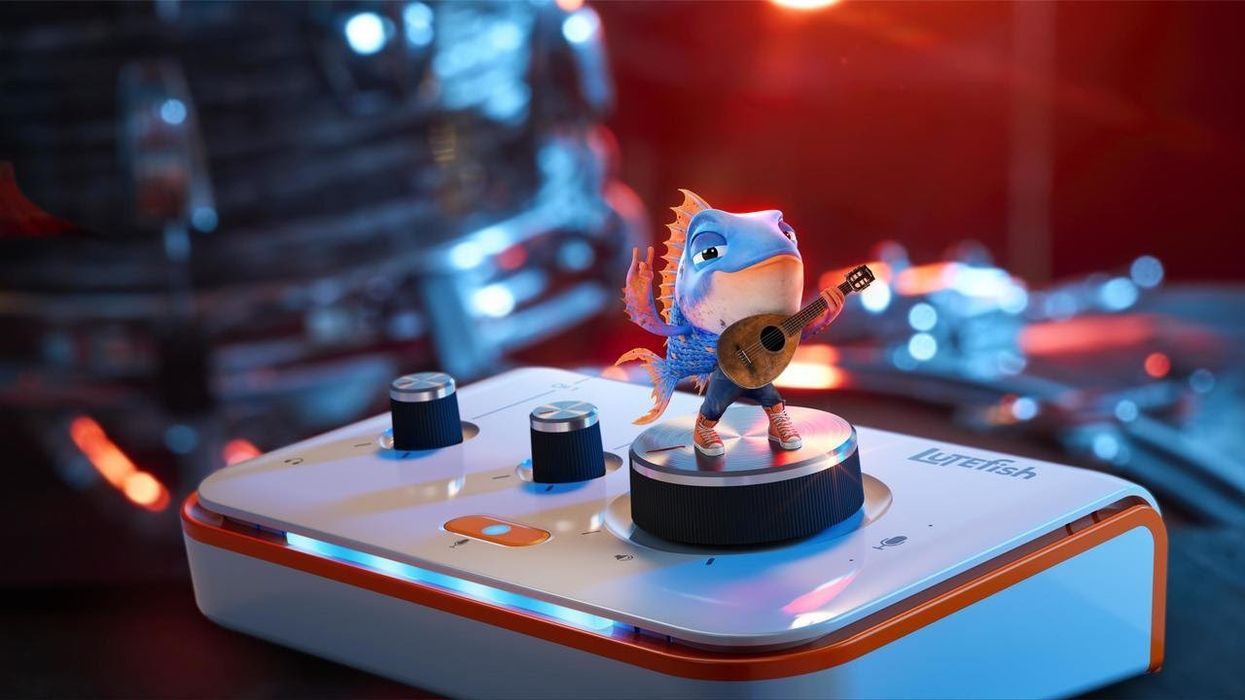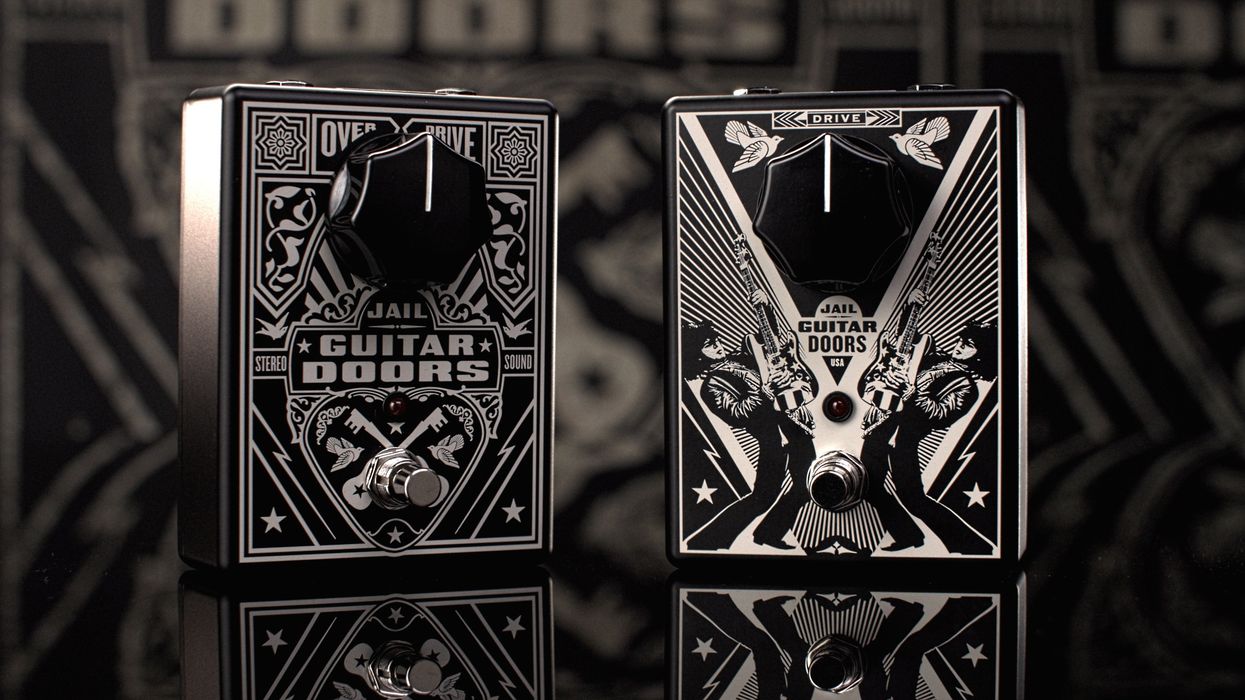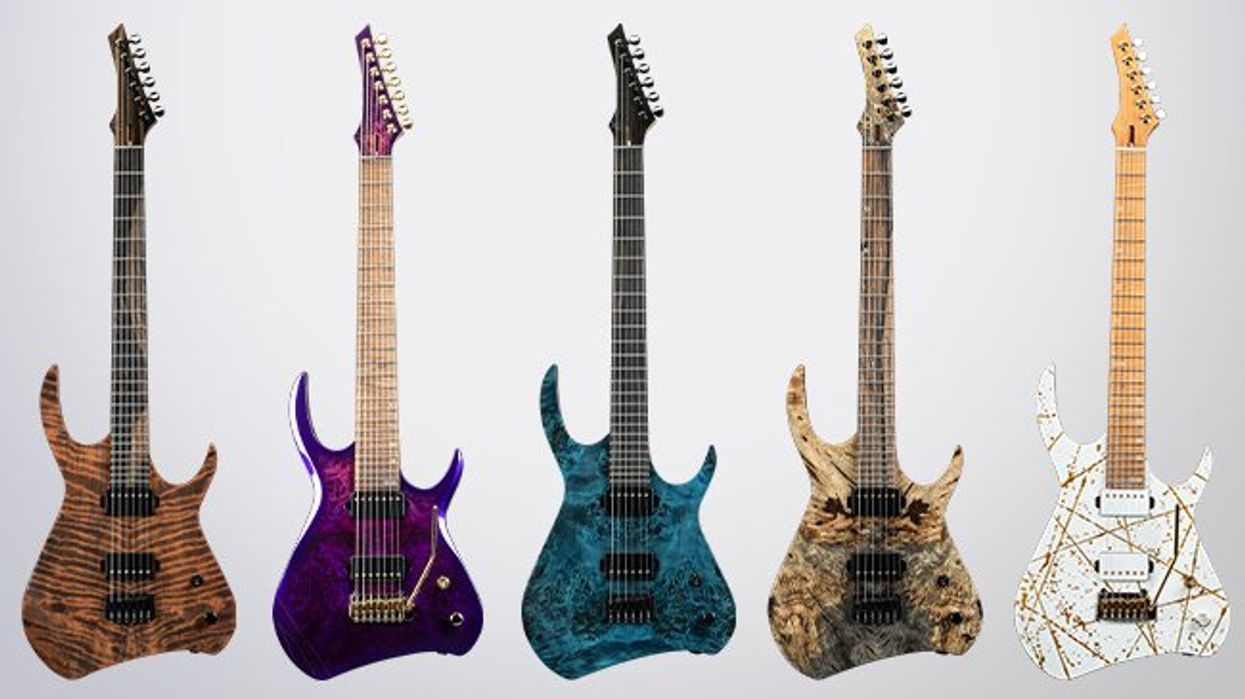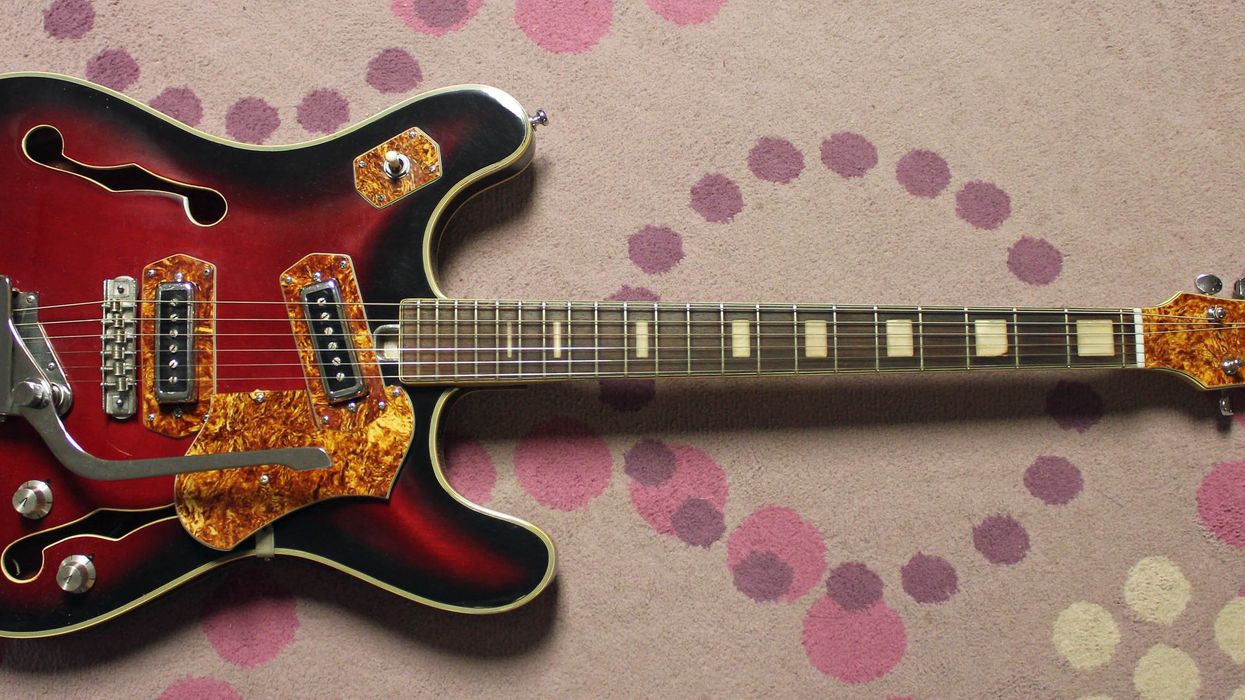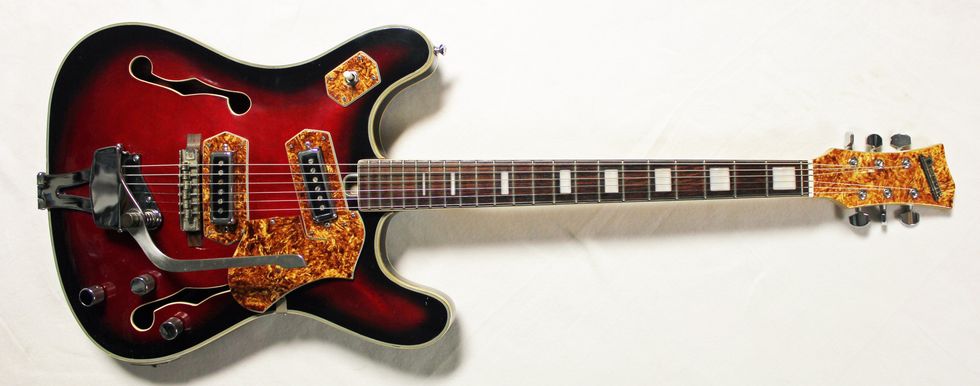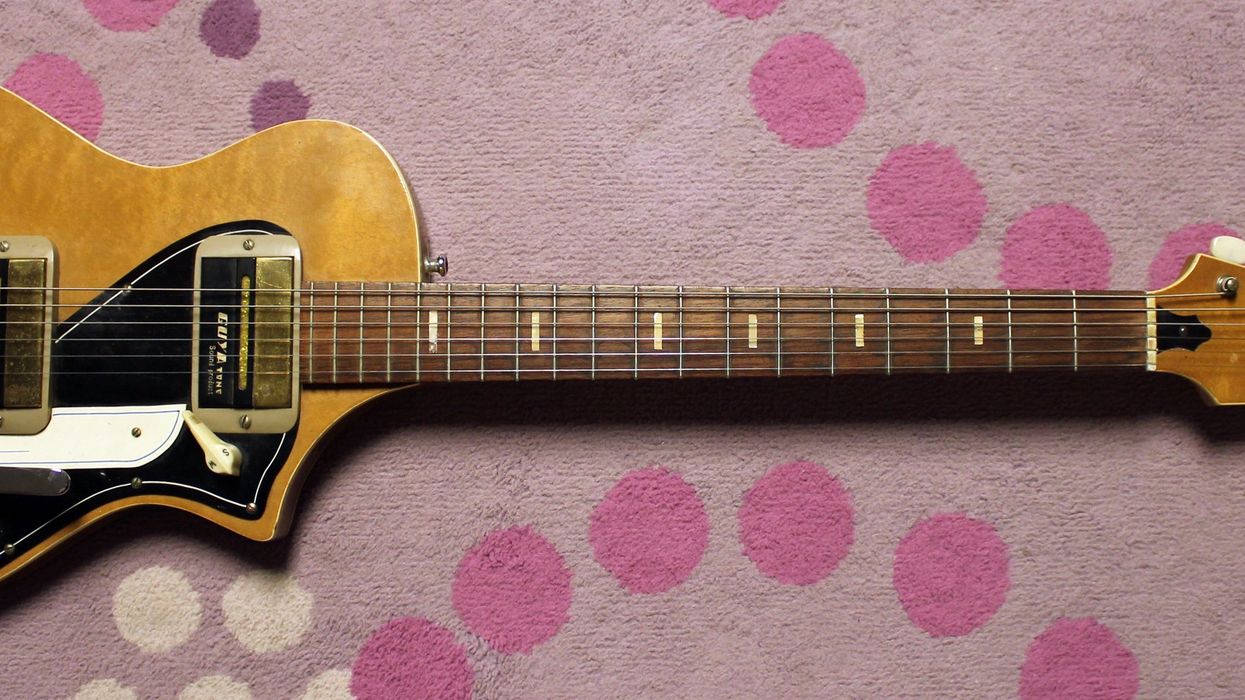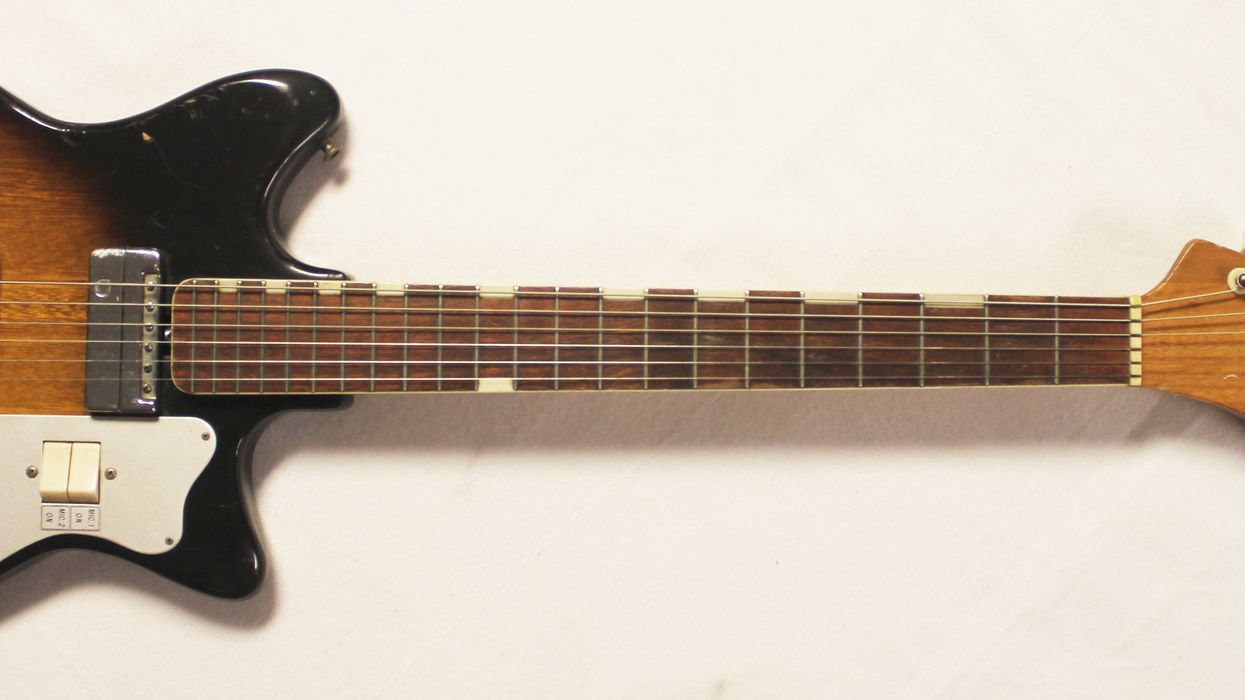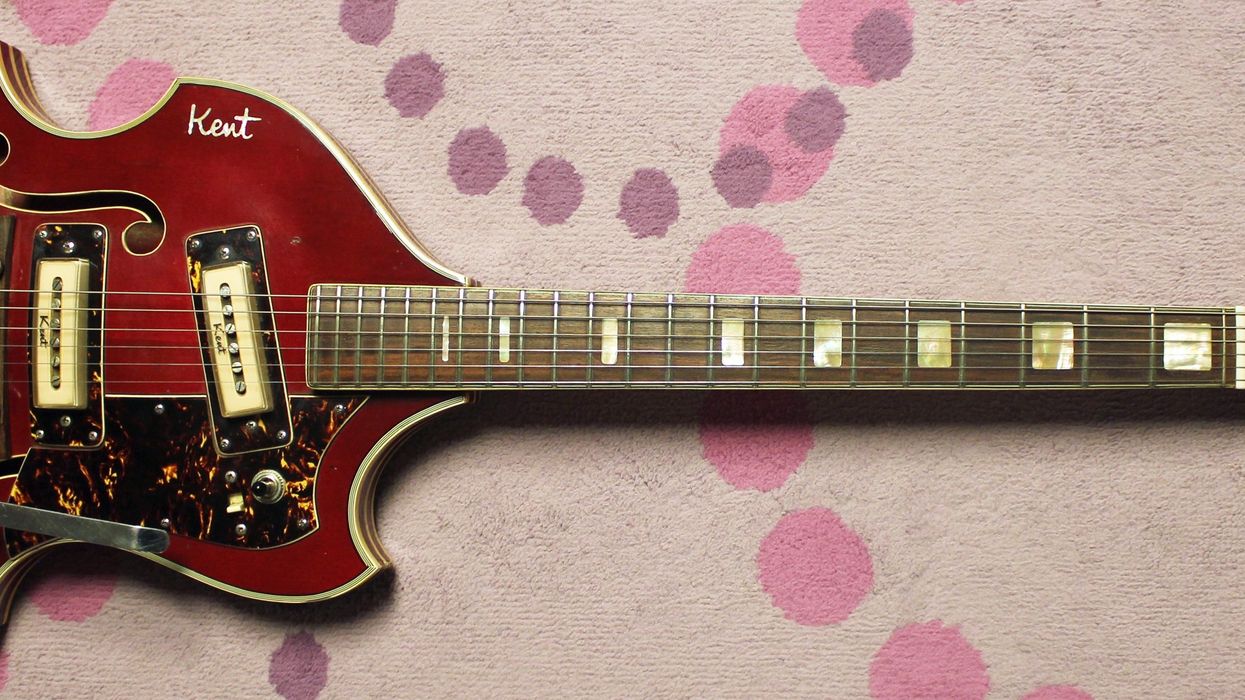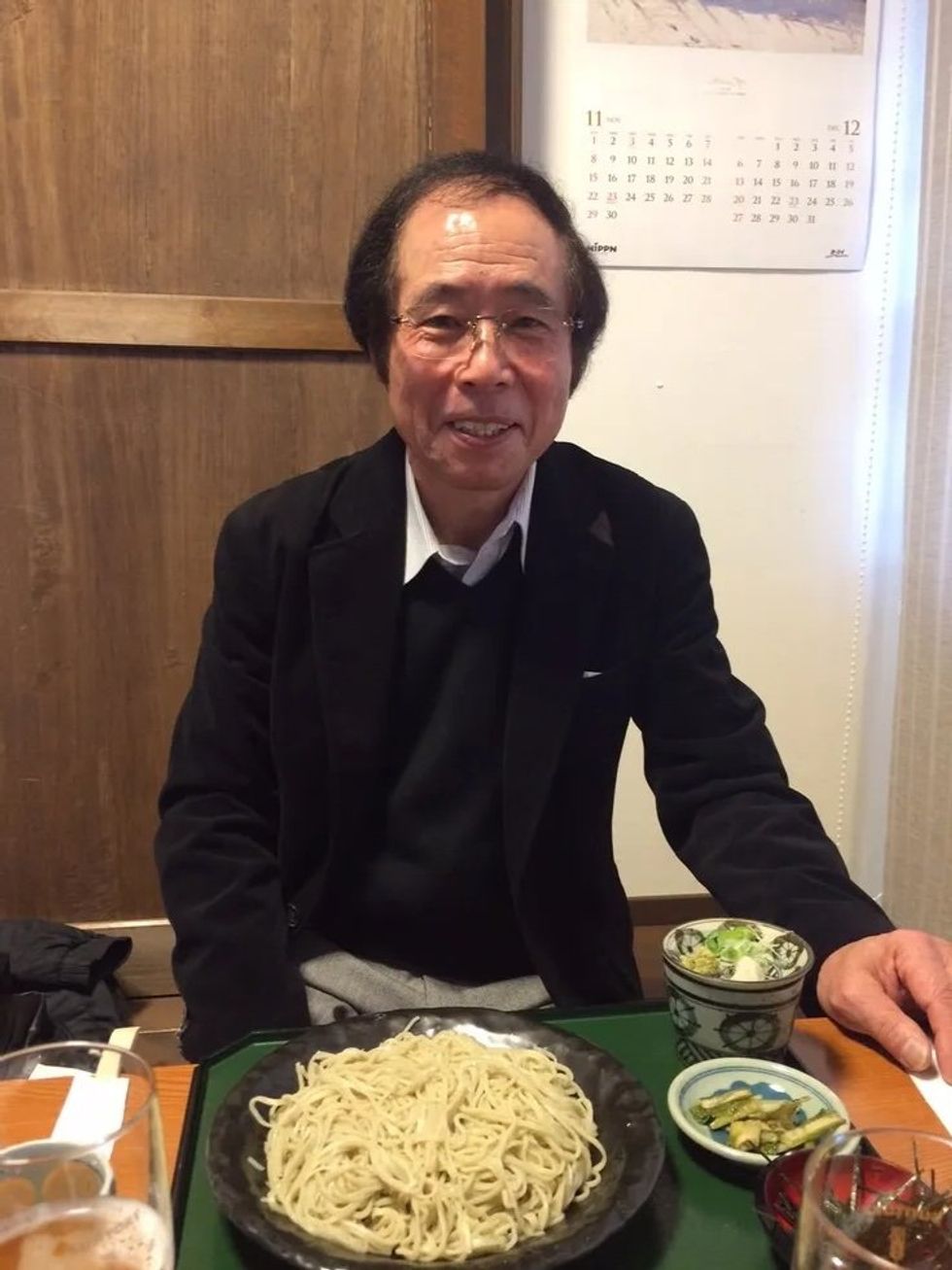When I was a kid, there were so many World War II veterans in my neighborhood. All these old-timers had pretty impressive sets of skills, and whenever you needed some work done, all you had to do was walk down the street and ask. My own grandfather was a welder, my neighbor was a woodworker, and two houses down, there was a plumber. These guys were all blue-collar vets who worked in local quarries, mills, and factories. I was, and still am, amazed by their technical prowess and knowledge. My granddad could fix just about anything!
While thinking back about those guys, my mind started wandering to Old Kraftsman guitars. Now, don’t confuse these with Custom Kraft guitars, made by Valco. Old Kraftsman guitars were built at the Kay factory in Chicago and sold through Spiegel catalogs back in the day. Often we think of Fender and Gibson as the big guitar manufacturers, but back in the 1960s, the guitar kings were Kay and Harmony, each producing guitars in Chicago. Both companies were well-established and, for many decades, made the go-to affordable guitars—until the less expensive Japanese guitars basically drove them out of business.
Kay catalogs are a glorious sight because they offered everything you’d need in stringed instruments. They had everything, from hollowbodies to acoustics to banjos to mandolins to basses. At every price point, too! In 1960, Kay guitars started offering affordable thinline electrics, dubbed “Value Kings.” Ranging in price from $69.95 to $169.50, these guitars were a nice choice for players just getting into the electric guitar sound that was gripping American teens. Then, there was a totally gonzo guitar in the 1960 catalog called the Solo King, or K4102. The Solo King has a crazy body shape that resembles a large, cursive “D,” and in it, you can kind of see the contours of another Kay model, the Vanguard, or K102. The subject of this month’s column, the Vanguard replaced the Solo King (a guitar I would love to own) in 1961.
The Vanguard first appeared in that year’s Kay catalog and lasted until 1965. The 2-pickup model you see here sold for $79.95, but from Spiegel catalogs. The only difference between this one and the one from the Kay catalog is the headstock shape. Otherwise the guitars are identical, featuring some nice DeArmond-made “pancake” pickups, two volumes, two tones, and a contour design that is slightly offset. The edges, unlike the smooth contours of Fender, are squared off and a bit chunky, as is the neck profile.
“Just like my old neighbors’ approach, if you put in a little work, then the Vanguard has some potential.”
The vibrato seen here was a popular model for Kay guitars and didn’t really work too well. The Japanese builders copied this same vibrato but with worse results! The things I mostly dislike about old Kay guitars are the frets, which are often brass and just don’t stand the test of time. But just like my old neighbors’ approach, if you put in a little work, then the Vanguard has some potential. For instance, the pickups are riveted onto the pickguard and are non-adjustable. But if you pop out those rivets and put some spacers under each pickup, you can get a roaring good sound that can drive a small tube amp in a quite lovely way. Also, the neck angle is often bad on these Vanguards, but if you cut up some old playing cards or credit cards then you can shim the necks to get a better angle. It’s all about the strings breaking over the bridge properly, folks! These Vanguards are still relatively affordable and have tones you can’t find anywhere else.
In 1966, the Vanguards were redesigned and no longer featured these awesome pickups. Sure, there were more colors and a headstock that resembled a dragon snout, but the Old Kraftsman Vanguard that I loved was gone. Soon afterwards, Kay started using imported Japanese parts and pickups to try and compete from a price point, and then simply ceased much of its production in favor of selling Japanese imports.
